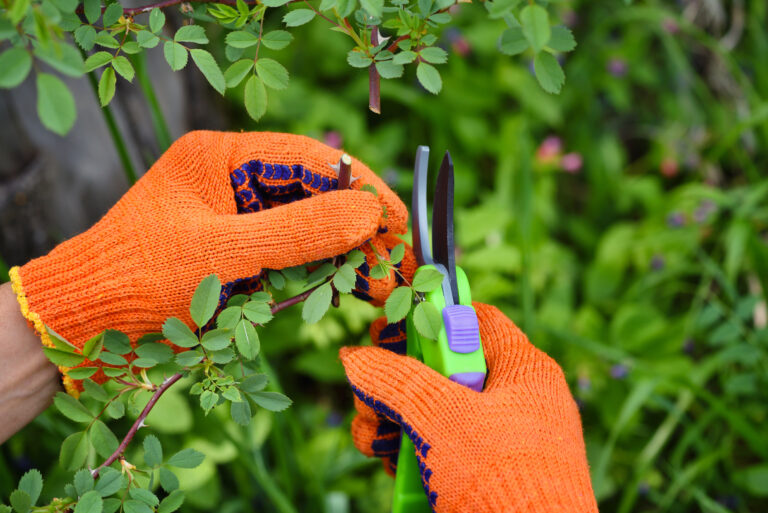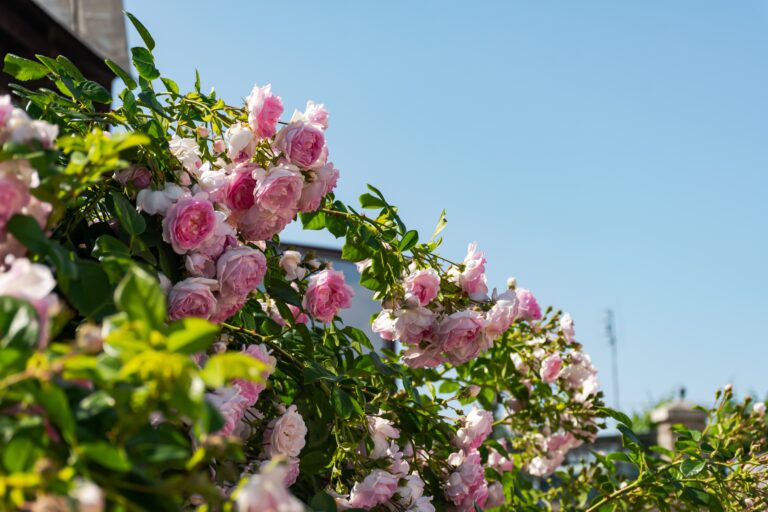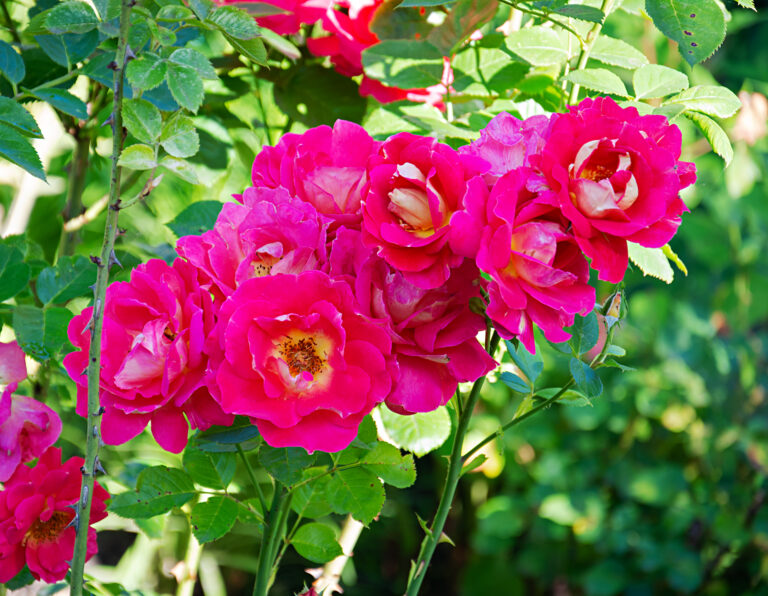Table of Contents
When to Prune Roses
1. Late Winter to Early Spring (Ideal for Most Roses)
- This is the most common pruning period for most rose varieties.
- Wait until the last frost has passed and you start seeing small swelling buds.
- Pruning at this stage removes deadwood and encourages fresh, strong growth.
2. After the First Bloom (For Repeat Blooming Varieties)
- If you have repeat-blooming roses, you can lightly prune them after their first bloom.
- This encourages a second round of flowers and keeps the plant looking tidy.
3. Late Summer or Early Fall (Minimal Pruning for Winter Preparation)
- While heavy pruning should be avoided in autumn, light pruning can help prepare your roses for winter.
- Remove dead or weak stems to reduce the risk of overwintering pests and diseases.
- Avoid encouraging new growth before winter, as it may not survive the cold.
4. Pruning Based on Rose Type
- Hybrid Tea & Floribunda Roses: Best pruned in late winter or early spring.
- Climbing Roses: Should be pruned after their first bloom in early summer, as they flower on old wood.
- Shrub Roses: Can be pruned lightly throughout the growing season to maintain shape.
- Miniature Roses: Require only minimal shaping and deadwood removal.
How to Prune Roses: 7 DIY Strategies
1. Use Sharp, Sterile Pruning Tools
The first step to successful pruning is having the right tools:
- Bypass pruning shears for small to medium stems.
- Loppers for thicker canes.
- A pruning saw for large, woody branches.
Always disinfect your tools with rubbing alcohol or a diluted bleach solution before and after use to prevent disease spread.

2. Identify and Remove Dead or Diseased Wood
Dead or diseased wood weakens the plant and attracts pests. Look for:
- Blackened or shriveled stems.
- Soft, mushy, or brittle branches.
- Canes with no signs of new growth.
When cutting, go at least an inch below the affected area to remove all diseased tissue.
3. Make Clean Cuts at a 45-Degree Angle
- Always cut about ¼ inch above an outward-facing bud at a 45-degree angle.
- This technique prevents water from collecting on the cut, reducing the risk of fungal infections.
- Outward-facing buds encourage open, outward growth for better airflow.

4. Remove Weak, Crossing, or Crowded Branches
Overcrowded branches can lead to poor air circulation, increasing the risk of fungal diseases like black spot and powdery mildew. To fix this:
- Remove spindly, thin canes that are unlikely to support healthy blooms.
- Eliminate any branches that cross or rub against each other.
- Maintain an open, vase-like shape for hybrid teas and floribundas.
5. Shape the Rose Bush for Controlled Growth
- For a fuller plant: Light pruning encourages more branches and a bushier shape.
- For larger flowers: A more aggressive prune will produce fewer but bigger blooms.
- For climbing roses: Train and tie long canes to trellises or supports while pruning for shape.
6. Deadhead Regularly to Encourage Blooming
-
Deadheading refers to the removal of spent flowers, which helps encourage continuous blooming.
- Cut just above a five-leaflet leaf to stimulate new blooms.
- For once-blooming roses, avoid deadheading, as they only flower once per season.
7. Provide Aftercare for Healthier Growth
-
Pruning can stress roses, so proper aftercare is crucial:
- Fertilization: Apply a balanced fertilizer or compost to nourish the plant.
- Deep Watering: Keep the soil moist but not waterlogged.
- Mulching: Add a layer of mulch around the base to retain moisture and suppress weeds.
Common Pruning Mistakes to Avoid
Even experienced gardeners sometimes make mistakes when pruning roses. Here are a few common pitfalls and how to avoid them:
- Over-Pruning: Cutting too much can weaken the plant and reduce blooms. Aim to remove no more than 1/3 of the plant at a time.
- Pruning Too Late: Avoid heavy pruning in late fall, as new growth may not withstand winter.
- Ignoring Disease Prevention: Always sterilize your tools before and after pruning to prevent infections.
- Leaving Stubs: Make clean cuts close to a bud—stubs can attract pests and disease.
- Not Considering the Rose Type: Different varieties have unique pruning requirements, so research your specific type before cutting.
Bonus Tips for Different Rose Types
Climbing Roses
- Don’t prune heavily in early spring, as they bloom on old wood.
- After flowering, remove dead canes and shape the plant.

Knockout Roses
- Require less maintenance but benefit from a light trim in late winter.
- Deadheading is optional, as these roses self-clean.

Miniature Roses
- Prune lightly to maintain shape and remove dead stems.
- Can be pruned throughout the season to encourage continuous blooms.




